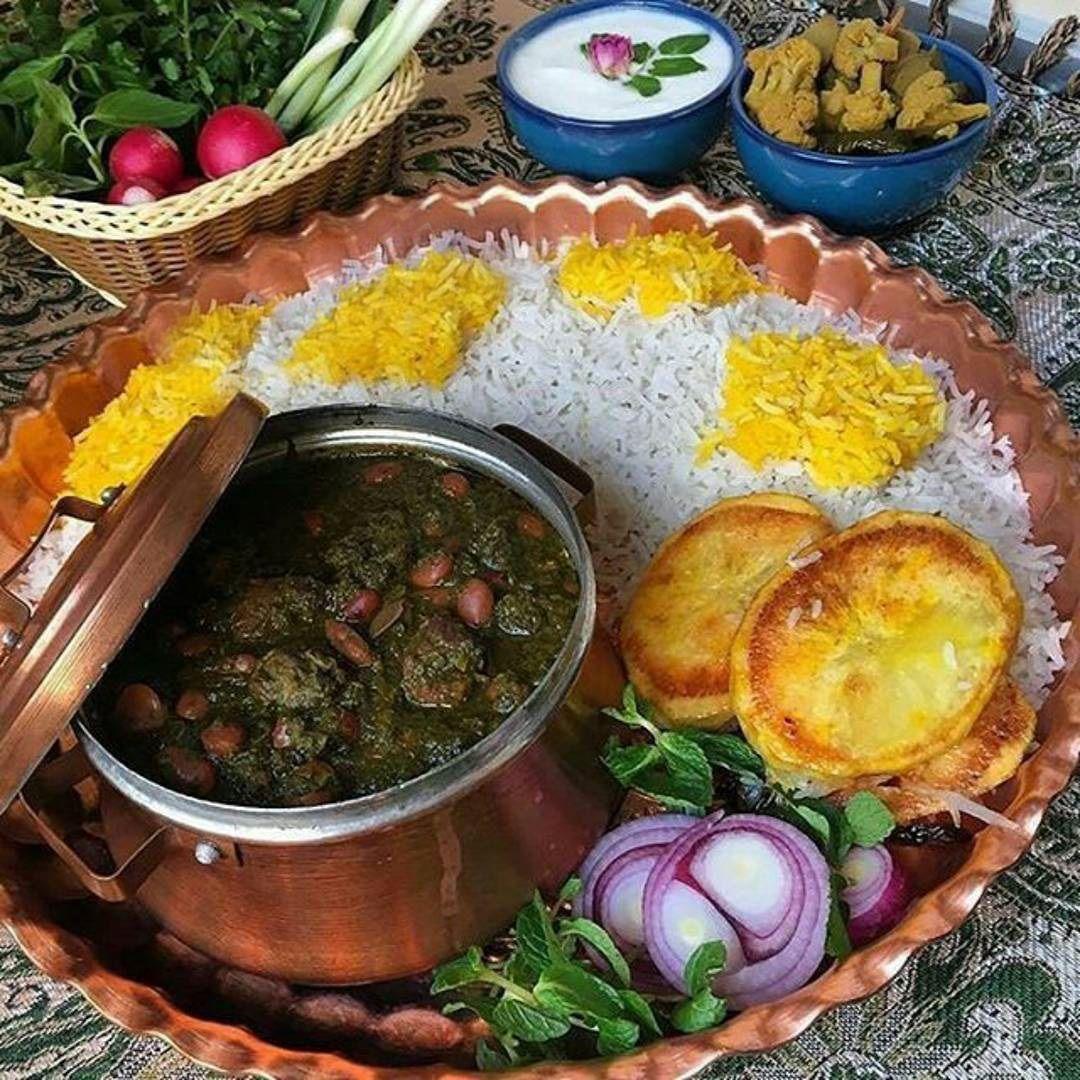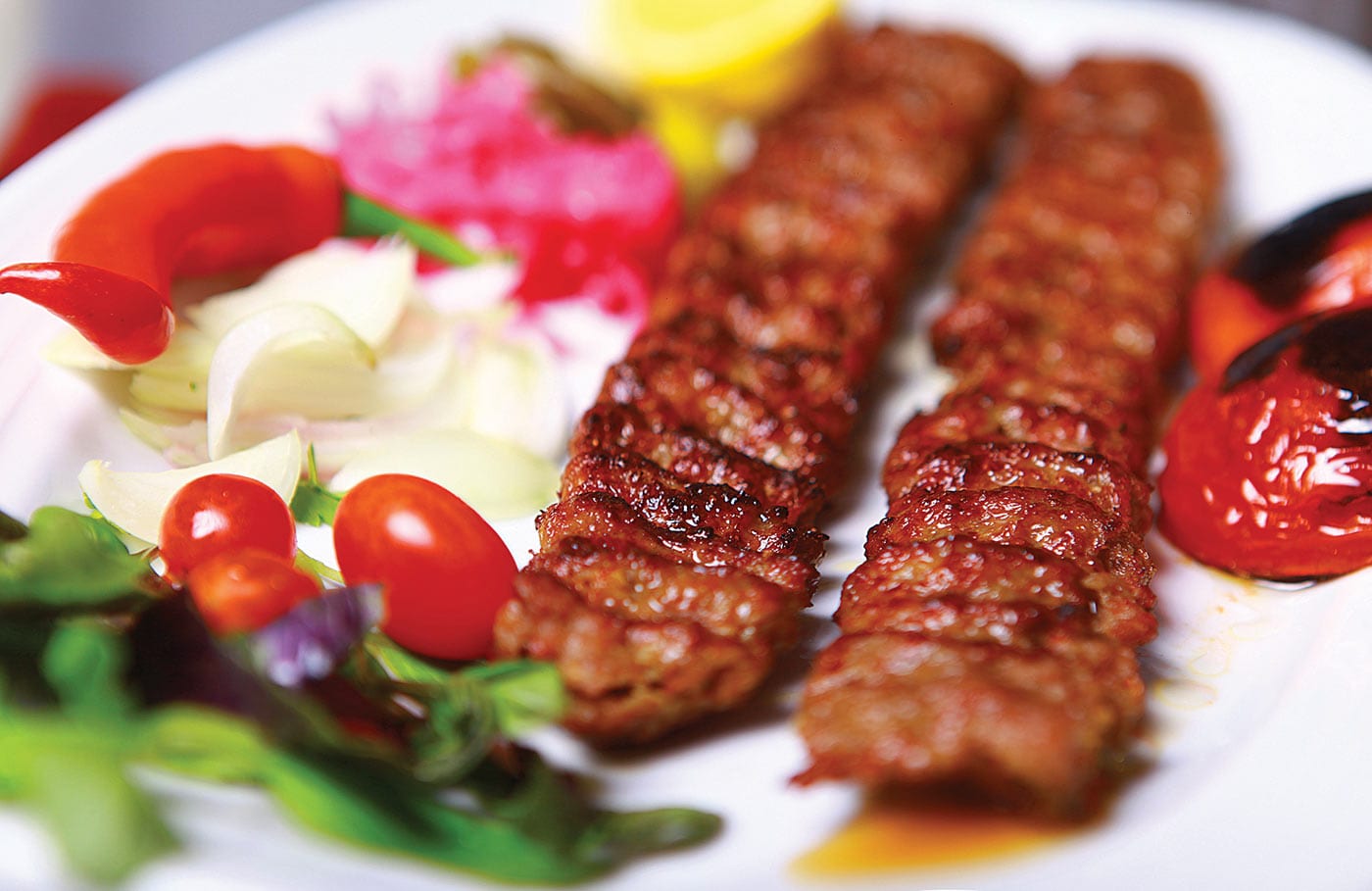As Iranian meals takes middle stage, this opening passage beckons readers right into a world of culinary delights, the place historical past, tradition, and flavors intertwine. Put together to embark on a gastronomic journey that may tantalize your style buds and go away you longing for extra.
From the traditional origins of Persian delicacies to the regional variations which have formed its various character, Iranian meals is a testomony to the wealthy tapestry of this historical land. Be a part of us as we discover the staple components, conventional dishes, and cultural significance that make Iranian delicacies a real culinary gem.
Iranian Delicacies

Iranian delicacies is a various and flavorful culinary custom that has developed over centuries, reflecting the nation’s wealthy historical past, geography, and cultural influences. Its dishes are characterised by a harmonious mix of spices, herbs, and recent components, creating a novel and charming style expertise.
The origins of Iranian delicacies will be traced again to historical Persia, the place culinary practices had been influenced by neighboring civilizations similar to Mesopotamia, Greece, and Central Asia. Over time, Iranian delicacies has undergone vital modifications, incorporating components from Arab, Turkish, and Mongolian traditions, whereas preserving its personal distinct character.
Regional Variations and Influences
Iran’s huge geography has resulted in regional variations in its delicacies. The northern Caspian area is understood for its use of fish, whereas the central plateau is legendary for its kebabs and stews. The southern areas incorporate flavors and components from the Persian Gulf, together with dates, seafood, and spices.
The western areas, influenced by Kurdish and Azerbaijani traditions, function hearty soups and dairy merchandise.
Staple Elements
Iranian delicacies depends closely on quite a lot of staple components that present a basis for a lot of dishes. These embody:
- Rice:An important staple grain, utilized in pilafs, stews, and numerous different dishes.
- Bread:Flatbreads similar to naan, lavash, and sangak are ubiquitous and accompany most meals.
- Herbs and Spices:Saffron, turmeric, cumin, coriander, and dill are generally used to boost flavors.
- Meat:Lamb, beef, and hen are the preferred meats, typically grilled or stewed.
- Dairy:Yogurt, cheese, and whey are important components in lots of dishes and sauces.
li> Legumes:Beans, lentils, and chickpeas are utilized in soups, stews, and salads.
Common Iranian Dishes
Iranian delicacies boasts an array of delectable dishes which have captivated palates worldwide. From the fragrant flavors of Chelo Kebab to the colourful hues of Ghormeh Sabzi, every dish embodies the wealthy culinary heritage of Iran.
Chelo Kebab
Chelo Kebab is an iconic Iranian dish that holds a particular place within the hearts of Iranians. It consists of tender, grilled kebabs served atop a mattress of fluffy saffron rice (chelo). The kebabs will be constituted of numerous meats, together with lamb, hen, or beef, and are marinated in a flavorful mix of herbs and spices.
The chelo is cooked with saffron, a valuable spice that imparts a golden hue and a fragile aroma.
Ghormeh Sabzi
Ghormeh Sabzi is a hearty stew that showcases the colourful flavors of Iranian delicacies. The principle components embody an assortment of recent herbs, similar to parsley, cilantro, and fenugreek, together with kidney beans, lamb or beef, and dried limes. The stew is simmered for hours, permitting the flavors to meld and create a wealthy, flavorful broth.
Ghormeh Sabzi is usually served with rice and is taken into account a consolation meals in Iranian households.
Fesenjan
Fesenjan is a candy and tangy stew that mixes the flavors of pomegranate and walnuts. It’s made with hen or duck and is simmered in a sauce constituted of floor walnuts, pomegranate juice, and a mix of spices. The result’s a thick, flavorful stew with a novel stability of candy and bitter notes.
Fesenjan is usually served with rice and is a well-liked dish for particular events.
Iranian Meals Tradition
Meals holds a profound significance in Iranian society, deeply entwined with social customs, cultural practices, and the nation’s wealthy historical past. Eating experiences in Iran are usually not merely about sustenance however are imbued with rituals, etiquette, and a deep appreciation for the artwork of culinary creation.
Customs and Etiquette
Iranian eating etiquette emphasizes hospitality, generosity, and respect. Company are welcomed with open arms and supplied the perfect dishes and drinks. It’s thought-about well mannered to just accept food and drinks when supplied, and to indicate appreciation for the host’s efforts.
Meals are usually served family-style, with visitors sharing platters of rice, stews, and salads. It’s customary to eat with one’s proper hand, and to make use of bread to scoop up meals. Alcohol consumption just isn’t widespread in Iranian tradition, and it’s thought-about rude to get intoxicated in public.
Meals in Festivals and Celebrations
Meals performs a central function in Iranian festivals and celebrations. Throughout Nowruz, the Persian New Yr, households collect to organize a particular dish referred to as Sabzi Polo Mahi, which symbolizes renewal and prosperity. Different festive dishes embody Ash-e Reshteh, a thick noodle soup, and Shirini, quite a lot of candy pastries.
Throughout spiritual holidays, similar to Ramadan, meals is used to mark the event. Iftar, the night meal that breaks the quick, is a time for households and associates to come back collectively and share a particular meal.
Well being and Diet

Iranian delicacies just isn’t solely flavorful and various but in addition boasts a wealthy dietary profile. The usage of recent components, herbs, and spices contributes to the general well being advantages of Iranian dishes.
The Mediterranean-style eating regimen, which Iranian delicacies carefully resembles, has been acknowledged for its well being advantages, together with lowered threat of continual ailments like coronary heart illness, stroke, and sort 2 diabetes.
Dietary Worth
Iranian dishes are typically wealthy in fruits, greens, complete grains, and lean proteins, offering a stability of important vitamins.
- Fruits and Greens:Iranian delicacies incorporates all kinds of recent vegatables and fruits, offering antioxidants, nutritional vitamins, and minerals.
- Entire Grains:Rice, bread, and different complete grains are staples in Iranian cooking, contributing fiber, nutritional vitamins, and minerals to the eating regimen.
- Lean Proteins:Grilled meats, fish, and legumes are widespread sources of protein in Iranian dishes, offering important amino acids.
Herbs and Spices, Iranian meals
Iranian cooking is famend for its intensive use of herbs and spices, which not solely improve taste but in addition supply well being advantages.
- Saffron:This prized spice incorporates antioxidants and anti inflammatory properties.
- Turmeric:Recognized for its anti-inflammatory and antioxidant results, turmeric is extensively utilized in Iranian cooking.
- Mint:Mint is a refreshing herb that aids digestion and has calming results.
Incorporating Iranian Dishes right into a Wholesome Weight-reduction plan
To include Iranian dishes right into a nutritious diet, think about the next suggestions:
- Select grilled meats over fried choices.
- Go for whole-wheat bread and rice.
- Embrace quite a lot of vegatables and fruits in your meals.
- Use herbs and spices liberally to boost taste and add dietary worth.
World Affect
Iranian delicacies has left an indelible mark on international gastronomy, spreading far past its borders and influencing culinary traditions worldwide.Iranian retailers, vacationers, and students launched Persian flavors and methods to totally different areas, resulting in the adoption and adaptation of Iranian dishes in numerous cultures.
From the Center East to Central Asia, and even to Europe and the Americas, Iranian delicacies has left a long-lasting legacy.
Variations and Fusion Dishes
In lots of areas, Iranian dishes have been tailored to native tastes and components. For instance, in India, the favored dish “biryani” is believed to have originated from the Iranian dish “birinj” (rice). In Turkey, “doner kebab” (rotating meat on a vertical spit) is a extensively consumed avenue meals that traces its roots to Iranian delicacies.Fusion
dishes have additionally emerged, mixing Iranian flavors with different culinary traditions. In the USA, “Persian tacos” have gained reputation, combining Iranian components and spices with Mexican tortilla wraps. In Europe, Iranian-inspired eating places supply progressive dishes that fuse Persian methods with up to date European delicacies.
Notable Iranian Cooks
Iranian cooks have performed a major function in selling Iranian delicacies globally. Famous Iranian cooks embody:
-
-*Najmieh Batmanglij
A famend cookbook creator and culinary historian who has launched Iranian delicacies to Western audiences by way of her books and cooking courses.
-*Yotam Ottolenghi
An Israeli-British chef who incorporates Iranian flavors and methods into his award-winning dishes.
-*Fuchsia Dunlop
A British meals author and chef specializing in Chinese language delicacies who has additionally written extensively about Iranian meals.
These cooks, amongst others, have helped elevate the profile of Iranian delicacies and contributed to its rising reputation all over the world.
Culinary Tourism

Embark on a culinary journey that unveils the wealthy tapestry of Iranian delicacies. Immerse your self within the vibrant flavors, aromas, and traditions which have formed this historical culinary artwork.
Our itinerary will information you thru a gastronomic journey that tantalizes your style buds and introduces you to the various culinary choices of Iran. From conventional avenue meals to elaborate banquets, put together to be captivated by the distinctive flavors and textures that outline Iranian delicacies.
Really useful Eating places
Bask in genuine Iranian eating experiences at these famend eating places:
- Tehran:Moslem Restaurant (Conventional Iranian delicacies)
- Shiraz:Haft Khan Restaurant (Superb eating with a contemporary twist)
- Isfahan:Chehel Sotoun Restaurant (Historic ambiance with beautiful Persian dishes)
Cooking Courses
Immerse your self within the artwork of Iranian cooking by way of interactive courses:
- Tehran:Persian Kitchen Cooking Faculty
- Shiraz:Shirin’s Cooking Courses
- Isfahan:Cooking with Maedeh
Visible Information to Iconic Iranian Dishes
Feast your eyes on these iconic Iranian dishes, every a culinary masterpiece:
- Ghormeh Sabzi:A hearty stew with herbs, beans, and meat
- Fesenjan:A wealthy and tangy stew with hen, walnuts, and pomegranate paste
- Dizi:A conventional lamb and bean stew served in earthenware pots
- Khoresht Bademjan:A aromatic eggplant stew with lamb or beef
- Tahdig:The crispy, golden-brown rice crust that could be a beloved Iranian delicacy
Frequent Queries: Iranian Meals
What are the important thing traits of Iranian delicacies?
Iranian delicacies is understood for its use of fragrant herbs and spices, similar to saffron, turmeric, and cumin. It additionally options all kinds of recent fruits, greens, and nuts.
What are a number of the hottest Iranian dishes?
Among the hottest Iranian dishes embody Chelo Kebab (grilled meat with rice), Ghormeh Sabzi (herb stew), and Fesenjan (pomegranate and walnut stew).
Is Iranian meals wholesome?
Iranian delicacies is usually thought-about to be wholesome, because it emphasizes recent components and lean proteins. It is usually low in saturated fats and ldl cholesterol.

